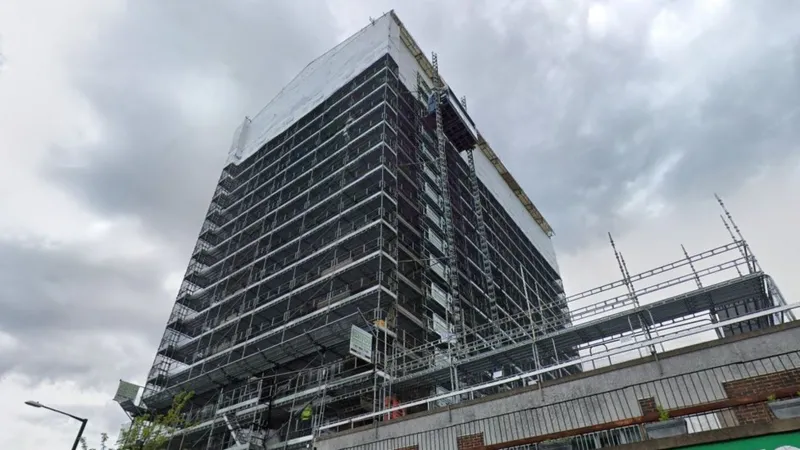Damp and mould are persistent issues in many UK homes, especially during the colder, wetter months. While often dismissed as a minor inconvenience, the presence of mould can indicate a serious underlying problem with a property, leading to significant damage and posing genuine risks to your health.
For tenants living in rented accommodation, the key question is: who is responsible? While simple lifestyle changes can help manage condensation, recurring or severe damp and mould is often a sign of “housing disrepair” – a situation where your landlord may be failing in their legal duties to you.
At FDM Solicitors, we specialise in housing disrepair claims, helping tenants across the UK secure the safe and healthy living conditions they are entitled to. This article explores the common causes of mould and clarifies when your landlord is legally obligated to act.

Understanding the Causes of Damp and Mould
Recently, property expert Phil Spencer shared some practical advice on preventing mould. While his tips were aimed at homeowners, they are useful for everyone to understand how moisture can build up in a property. Taking these steps can also be important in demonstrating to your landlord that the problem isn’t due to your lifestyle, but rather a structural issue.
Key preventative measures include:
Improving Ventilation
Moisture from cooking, showering, and even breathing needs to escape. Regularly opening windows, even for just 15-20 minutes a day, and using extractor fans in kitchens and bathrooms is crucial for air circulation.
Controlling Condensation
When warm, moist air hits a cold surface like a window or an external wall, it turns into water droplets (condensation). Wiping this moisture away promptly prevents it from soaking into surfaces and allowing mould to grow. Drying clothes indoors on radiators should be avoided as it releases large amounts of moisture into the air.
Ensuring Airflow
Leaving a small gap between furniture and external walls allows air to circulate, preventing damp, cold pockets where mould thrives.
Maintaining a Consistent Temperature
A constantly cold home is more susceptible to condensation. Keeping a low, consistent temperature can help reduce the risk of moisture build-up on cold surfaces.

The Serious Health Risks of Living with Damp and Mould
The presence of mould is not just an aesthetic issue; it can have a significant impact on your physical health. Mould produces allergens, irritants, and sometimes toxic substances. According to health organisations like Asthma + Lung UK, exposure can trigger a range of problems, including:
Respiratory Issues
Sneezing, runny noses, and coughing.
Allergic Reactions
Skin rashes and itchy eyes.
Exacerbation of Existing Conditions
For those with asthma or other lung conditions, mould can worsen symptoms and even lead to severe asthma attacks.
No one should have their health compromised by their living conditions. If you or your family are experiencing these symptoms, the mould in your home could be the cause.
When Prevention Isn’t Enough: Your Landlord’s Legal Obligations
What happens when you have ventilated your home, managed condensation, and taken all reasonable steps, but the damp and mould persist or keep returning?
This often indicates a more serious structural defect, which falls under your landlord’s responsibility. These issues can include:
- A leaking roof or faulty guttering
- Cracked walls or a damaged damp-proof course
- Leaking internal pipes
- Poorly insulated windows and walls
Under UK law, including the Landlord and Tenant Act 1985 and the Homes (Fitness for Human Habitation) Act 2018, landlords have a legal duty to ensure their properties are safe and fit for human habitation. This explicitly includes ensuring the property is free from hazardous damp and mould.
If you have reported the issue to your landlord and they have failed to carry out the necessary repairs in a reasonable timeframe, they are likely in breach of their legal obligations.
How FDM Solicitors Can Help
If your landlord is ignoring your requests for repairs, you do not have to continue living in unsafe conditions. The housing disrepair team at FDM Solicitors can help you take action.
We can assist you by:
Forcing Your Landlord to Act
We can use legal channels to compel your landlord to carry out the essential repairs to fix the root cause of the damp and mould.
Claiming Compensation
You may be entitled to compensation for any property that has been damaged (e.g., clothing, furniture, carpets), as well as for the distress, inconvenience, and any negative health effects you have suffered.
Don’t suffer in silence. If you are struggling with a damp and mould problem that your landlord won’t fix, contact our expert team today for a no-obligation consultation to understand your rights.







